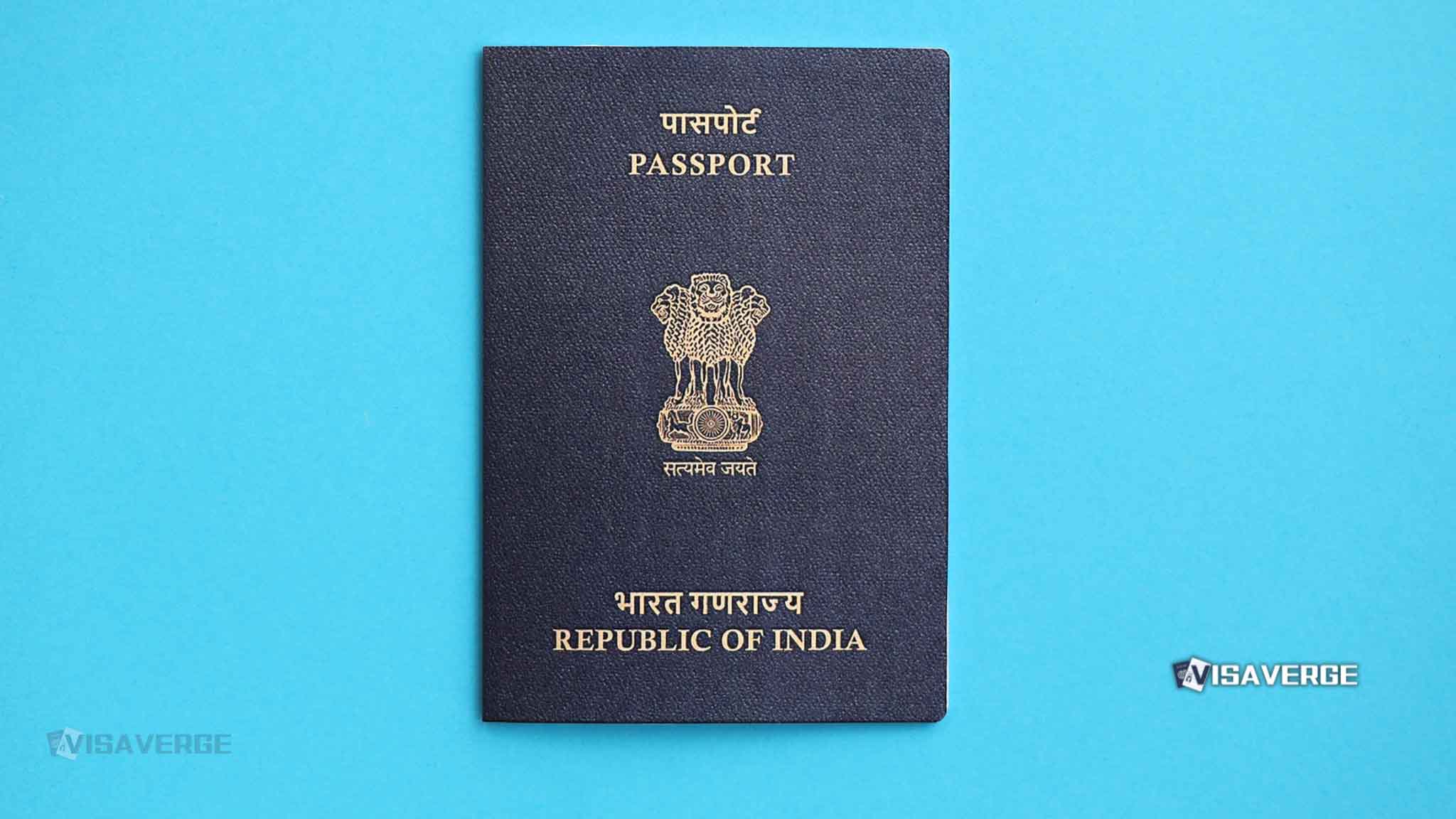(DUBAI, UAE) India on Tuesday launched Passport Seva 2.0 for UAE NRIs, kicking off the issue of chip-enabled e-passports from October 28, 2025, at the Indian Consulate General in Dubai and Abu Dhabi. The upgraded passport embeds a secure electronic chip carrying biometric and personal data, designed to speed up border checks and raise security to meet global standards.
Consular officials said the move will cut waiting times at service centers and help the large Indian expatriate community in the UAE complete applications with fewer steps and fewer repeat visits.

What is the e-passport?
The e-passport contains an RFID chip that stores a digitized version of key data and is built to comply with International Civil Aviation Organization (ICAO) rules used at airports worldwide.
- It will look familiar to most travelers except for a gold-colored chip symbol on the cover, indicating it can be read electronically by immigration systems.
- The document aims to:
- Reduce manual checks
- Curb tampering
- Make travel smoother for frequent flyers needing quick immigration clearance at busy hubs
How Passport Seva 2.0 changes the process
Rollout under Passport Seva 2.0 began at the Indian Consulate General in Dubai and Abu Dhabi, with emphasis on digital filing and front-end checks through a single online account.
- Key digital features:
- Photo and signature uploads
- Front-end checks handled online
- Step-by-step file assembly before visiting a service center
- Benefits:
- Shorter queues at centers
- Reduced pressure during peak periods (school holidays, festival seasons)
- Fewer repeat visits for applicants
Officials said the program aligns with India’s wider shift to secure digital services for overseas citizens as part of a multi-year modernization of passport operations.
Step-by-step application workflow
- Create an account on the official Passport Seva 2.0 portal.
- Complete the online file, including an ICAO-compliant photograph and signature upload.
- Print the completed form and confirm an appointment.
- Book a timeslot at an authorized service provider in the UAE.
- Bring original documents for physical verification and provide biometrics during the in-person visit.
- The online entry point (central gateway for the workflow) is available at the Passport Seva 2.0 login page: Passport Seva 2.0 portal.
- According to analysis by VisaVerge.com, the portal-driven approach moves data checks upstream so officers can focus on verification and biometrics during the in-person visit.
Booking appointments and in-person steps
- Appointments for UAE residents must be secured through BLS International’s scheduling system.
- The appointment portal for UAE residents is: BLS International appointment portal.
- At the selected center, staff will:
- Verify that uploaded records match original documents
- Collect biometrics
- Confirm photo and signature compliance
Practical changes to reduce errors and repeat trips
Officials highlighted several practical improvements:
- Online upload of photos and supporting records to cut repeat trips and reduce counter errors.
- Applicants are advised to follow ICAO photograph rules (background, lighting, face position) to avoid rejections and delays.
- A new tweak allows minor corrections to be handled directly by service providers without retyping the form or paying extra charges — helpful for families with children or elderly applicants.
Security enhancements
The e-passport’s security features support automated checks that flag altered or counterfeit pages.
- Because the chip links to printed data, any mismatch is easier to detect.
- Border agents use similar readers globally, which:
- Standardizes checks
- Speeds up clearance during busy travel periods
- The design follows ICAO standards, keeping the document in line with global practice as more countries adopt e-passports and automated gates.
User impact and expectations
- For UAE NRIs, the new model means:
- Less time at service centers
- More control over when to submit records
- The printed form acts as final confirmation at the appointment
- The government expects the system to reduce backlogs that build during peak application periods.
- There is no special deadline tied to the launch, but consular staff encourage early filings for those planning international travel in coming months. Standard processing queues still apply once files are accepted.
Travelers will continue to use their e-passports as a traditional booklet with the added benefit of faster processing at airports equipped with e-gates and electronic readers. The change does not alter visa rules or entry policies but improves document security and reduces time in immigration lines.
Broader context and final guidance
Passport Seva 2.0 is part of a wider government effort to digitize consular services for millions of overseas citizens, including:
- Clearer guidance on photo and document standards
- Greater transparency on appointment availability
- Tighter integration between online files and in-person checks
For UAE NRIs, the launch provides a practical path to a next-generation travel document built to global specifications, backed by a process intended to be faster, safer, and more predictable.
- The official portal remains the single most important link; applicants are urged to complete all steps online before visiting a center.
- For authoritative details, the government’s passport platform is here: Passport Seva 2.0 portal.
Frequently Asked Questions
This Article in a Nutshell
India’s Passport Seva 2.0 launched for UAE NRIs, starting issuance of chip-enabled e-passports at Dubai and Abu Dhabi consulates on October 28, 2025. The e-passport integrates an ICAO-compliant RFID chip holding biometric and personal data to speed automated border checks, reduce tampering and align with global standards. The rollout emphasizes online account creation, photo and signature uploads, and front-end verification to shorten in-person processing. Applicants must register on the Passport Seva 2.0 portal, complete and print their file, and book appointments through BLS International for biometric capture and document verification. Expected benefits include shorter queues, fewer repeat visits, more predictable service during peak periods, and stronger security. Officials advise applicants to follow ICAO photo rules and complete online steps before visiting service centers.












